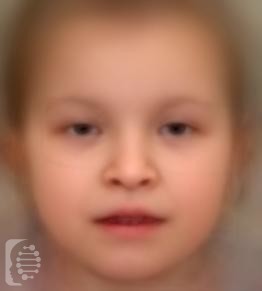What is Chromosome 8q21.11 Deletion syndrome?
Chromosome 8q21.11 Deletion syndrome is a rare genetic syndrome that occurs due to a heterozygous overlapping microdeletion on chromosome 8.
What gene change causes Chromosome 8q21.11 Deletion syndrome?
Loss of DNA fragment in chromosome 8, specifically in the q21.11 region. The overlapping microdeletions on the ZFHX4 or PEX2 genes within chromosome 8 are responsible for causing the syndrome.
The majority of cases identified were not inherited, but if inherited it is done so in an autosomal dominant pattern.
In some cases, a genetic syndrome may be the result of a de-novo mutation and the first case in a family. In this case, this is a new gene mutation which occurs during the reproductive process.
In the case of autosomal dominant inheritance, just one parent is the carrier of the gene mutation, and they have a 50% chance of passing it onto each of their children. Syndromes inherited in an autosomal dominant inheritance are caused by just one copy of the gene mutation.
What are the main symptoms of Chromosome 8q21.11 Deletion syndrome?
Intellectual disability and developmental delay are defining symptoms of the syndrome.
Facial features associated with the syndrome include a round face, full cheeks, a high forehead, a wide nasal bridge, prominent and low-set ears, a short philtrum, ptosis, a short neck, and mild finger and toe anomalies. Hypotonia is a constant symptom.
Possible clinical traits/features:
Hypertelorism, Full cheeks, Hearing impairment, Opacification of the corneal stroma, Cognitive impairment, High forehead, Hypoplasia of penis, Underdeveloped nasal alae, Blepharophimosis, Aplasia/Hypoplasia of the corpus callosum, Aplasia/Hypoplasia affecting the eye, Abnormality of the metacarpal bones, Wide nasal bridge, Cataract, Abnormal palate morphology, Abnormality of retinal pigmentation, Abnormality of the dentition, Abnormality of the voice, Absent palmar crease, Low-set ears, Low-set, posteriorly rotated ears, Muscular hypotonia, Narrow mouth, Micrognathia, Intellectual disability, Short neck, Protruding ear, Syndactyly, Sclerocornea, Autosomal dominant inheritance, Round face, Short philtrum, Camptodactyly of finger, Strabismus, Ptosis, Camptodactyly, Downturned corners of mouth, Downslanted palpebral fissures, Finger syndactyly, Cryptorchidism, Exaggerated cupid’s bow, Eczema, Epicanthus.
How is it diagnosed?
To find out if someone has a diagnosis of Chromosome 8q21.11 Deletion syndrome, it is important to have a consultation and evaluation with a clinical genetic specialist. Specialists may also suggest specific genetic testing or other types of tests to help reach a diagnosis. FDNA’s AI technology can help speed up the diagnostic process by analyzing facial features and other health information.

